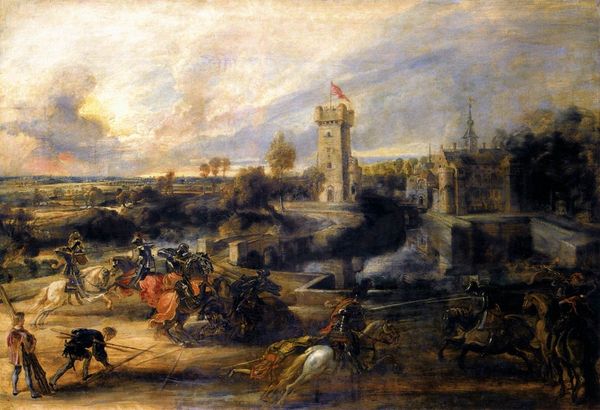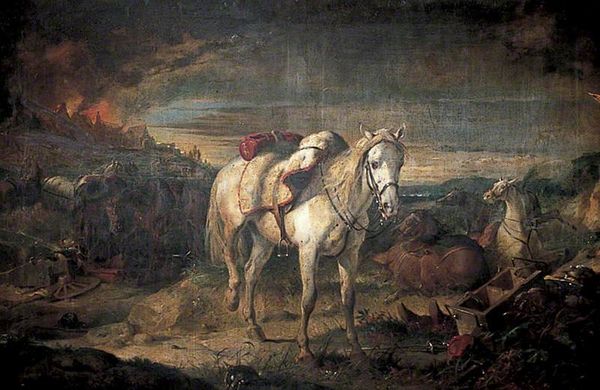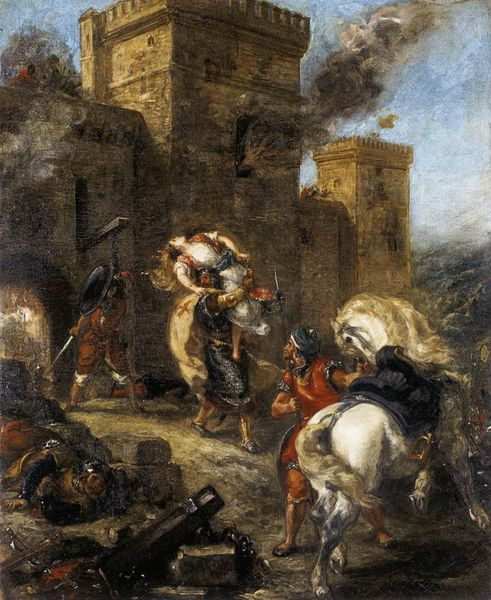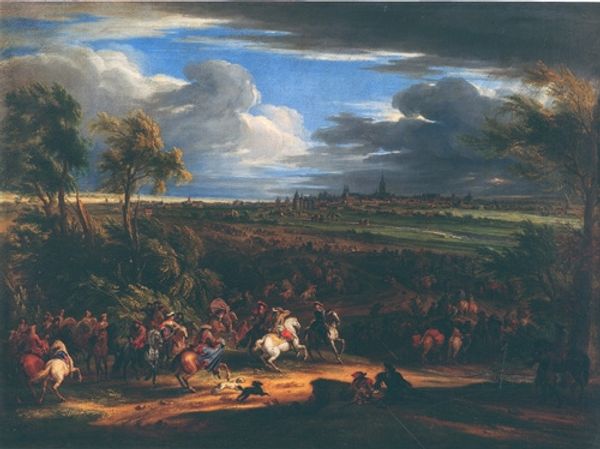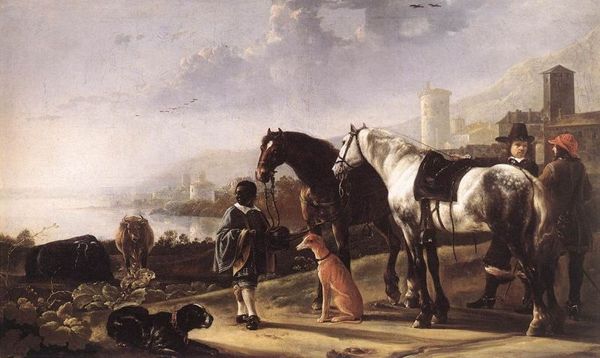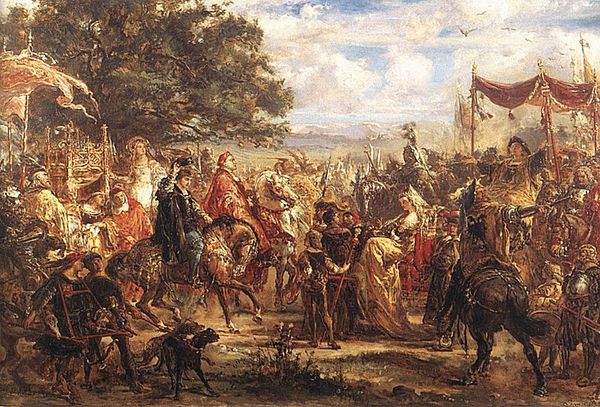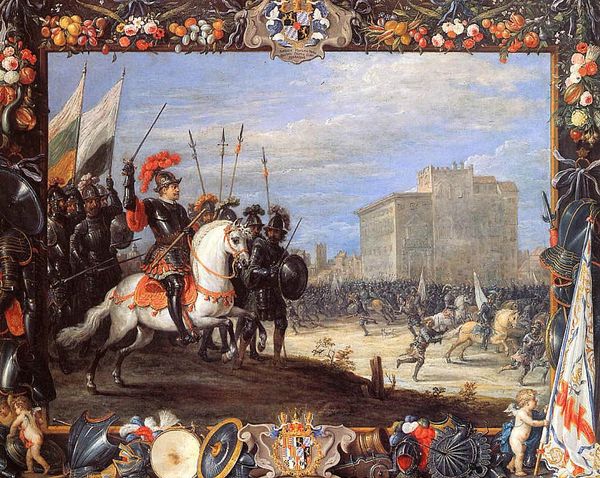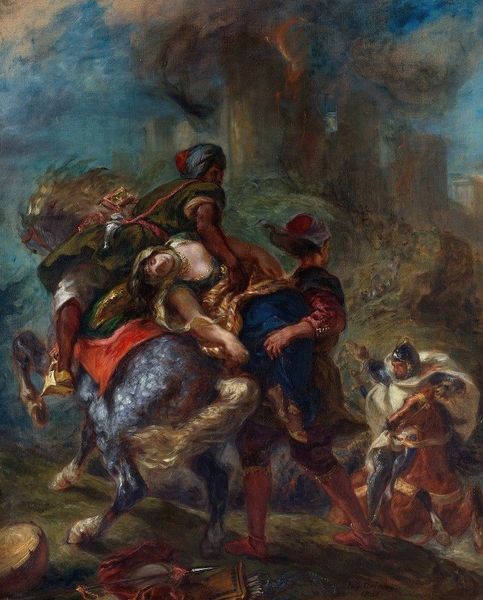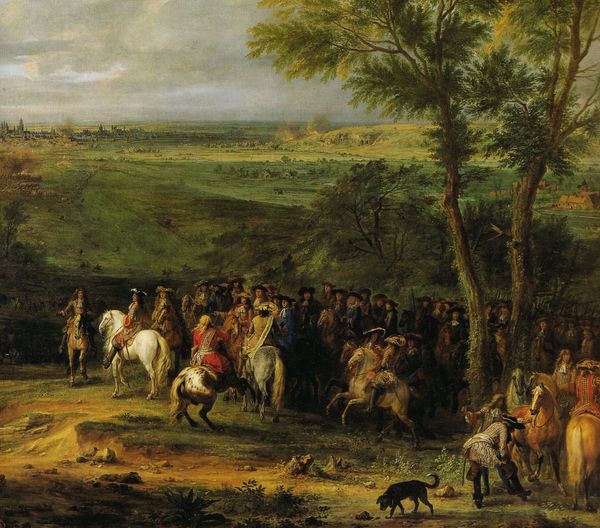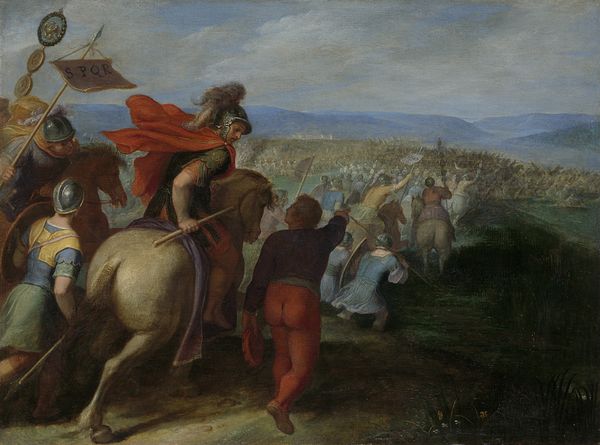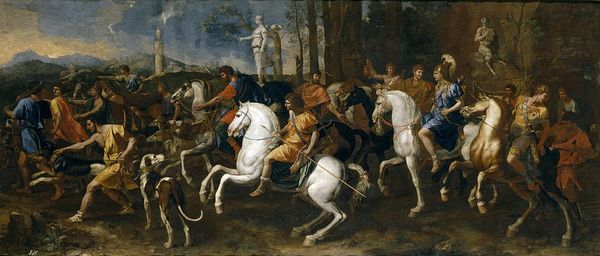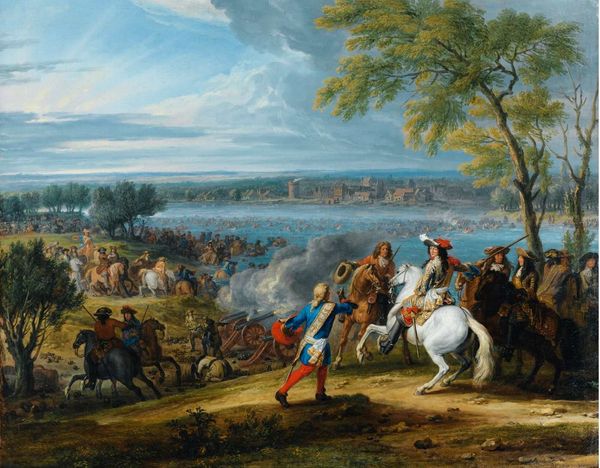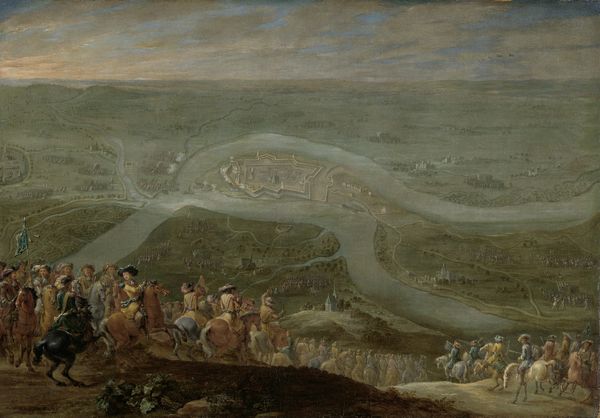
oil-paint
#
baroque
#
oil-paint
#
landscape
#
oil painting
#
history-painting
#
realism
Copyright: Public domain
Curator: This sprawling canvas, entitled *Crossing the Rhine*, was created by Adam van der Meulen in 1672, during a period of significant military and political upheaval in Europe. It is primarily executed in oil paint. What’s your immediate take on it? Editor: I’m struck by the way it depicts, almost glorifies, the logistics of war, like some immense enterprise. It almost seems detached from the true violence, it appears to be quite celebratory. Curator: I think you’ve nailed something there. Van der Meulen was, in essence, the official painter for Louis XIV’s military campaigns. He traveled with the army. Look closely at how the tools of war– the cannons, the horses, the soldiers–are rendered with so much attention to detail. He wasn’t simply depicting a battle, but showcasing the grandeur and material might of the French military machine. Editor: So it's an exercise in statecraft through art. Given the date, it obviously functions as propaganda, constructing Louis XIV as an omnipotent conqueror. This isn't about individual heroics; it’s a show of power in numbers and supplies. Were these paintings commissioned by the crown, designed for public consumption, or made for private aristocratic collections? Curator: Both, I think. The paintings, and engravings based on them, circulated among the elites, reinforcing the power and legitimacy of Louis XIV. It’s an aestheticisation of political force, contributing to the cultural construction of French absolutism. The actual crossing became, thanks to the power of the image, a cornerstone of Louis’s political iconography. Editor: Interesting. I mean, look how prominent the horse and associated tack are. Clearly an integral piece of equipment, the value of horses themselves cannot be underestimated here, especially not on campaign. And the uniforms. It almost feels like there's as much interest in these accessories to war than the human participants themselves. What can it tell us about how this war was actually fought and provisioned? Curator: Absolutely. It serves as an extraordinary window into not only military strategy and campaign, but also the infrastructure and materials underpinning 17th century warfare and monarchy. It compels us to see the crossing less as a singular act of military triumph, but as the outcome of the political machinations of the crown, and its command over the labour and products of a nation. Editor: Well, viewing it through that lens makes me reconsider what I first saw as mere "celebration." I appreciate that what this piece emphasizes the close ties between royal authority, war's means, and image creation, thus revealing so much of a moment in time, with some critical observation and close examination. Curator: Agreed. By analyzing its process of production, its place in Louis XIV’s court, the techniques employed and of course the impact and visibility of images themselves, we come closer to seeing "Crossing the Rhine" for all that it is: more than just a single painter’s work and rather as a complex object and actor embedded within culture, political power, and materials.
Comments
No comments
Be the first to comment and join the conversation on the ultimate creative platform.
